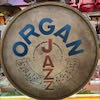So I'm setting up a sharpening station for lathe/turning tools and have a few questions:
1) Rikon 1HP slow speed grinder or the 1/2HP model for running 1 or 2 CBN wheels?
2) Which wheel(s) to start with and what grit? I want to use for maintaining some chisels, etc., secondarily, so was thinking of the "Mega Square" wheel as the first one - at 180 grit. Follow that up with 350 or 600 and what type (model) for the second wheel? Is the 4-in-1 or Radius Edge a better choice for the lower grit wheel? Is 180 the best grit to be the lower grit of the two? Which wheel type is better for the lower and higher grits and why?
I don't plan to to a lot of tool shaping or restoration. Maybe a chipped chisel or re-bevel a plane blade here or there. Mainly this setup is for turning tools so I want that to be the primary driver of the choices I make but need to hear from some experienced folks first. I plan to also call Ken at woodturnerswonders early this week to see what he says.
Thanks in advance. I'm new at this and don't want to waste money and hope to get the desired results for the long term the first time.




 Reply With Quote
Reply With Quote




